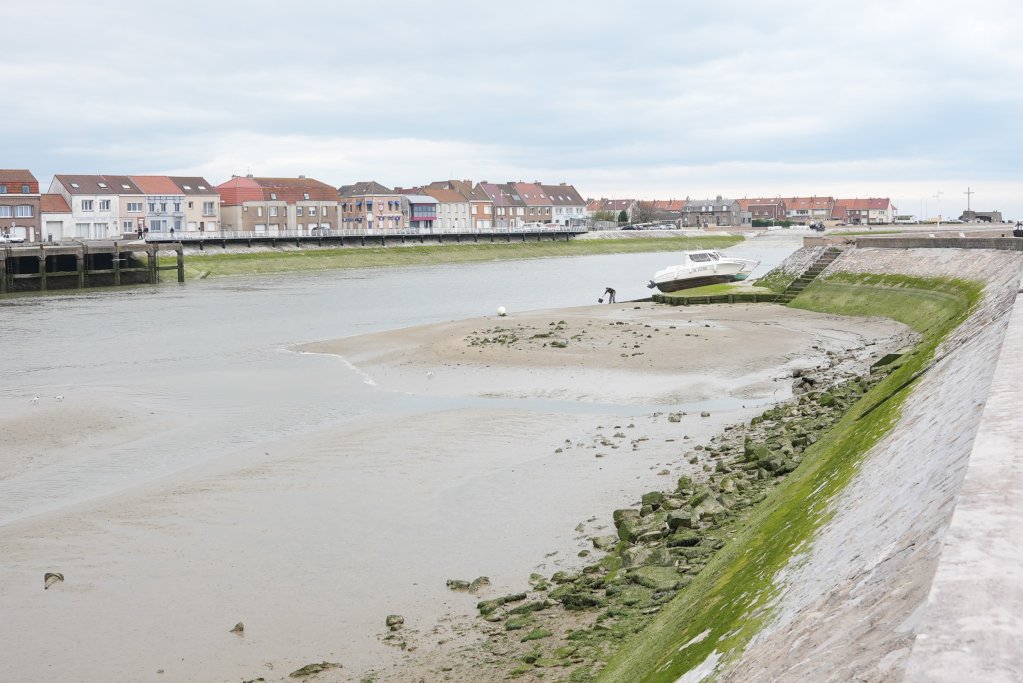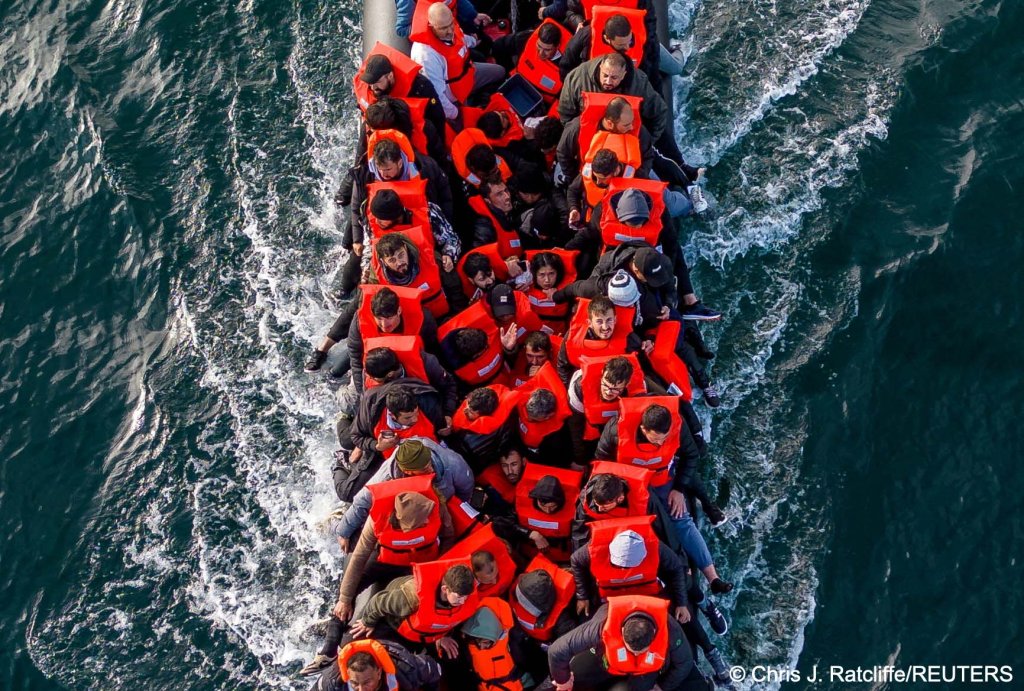Faced with ever-increasing police pressure, more overcrowded boats and departures ever farther from Calais, migrants are at even greater risk of dying when attempting to cross the Channel.
During the night of January 13, a group of Syrians, including a one-month-old baby, climbed onto a boat in the water just off the beach. It was 2 am. The swell of the sea, the night and the waves caused panic when they got into the boat, say survivors. The boat capsized and people fell into the water. In the confusion, two Syrian teenagers aged 14 and 16 drowned, just a few meters from the beach. Three other people also died that night. The water was nine degrees celsius.
For several months, Channel crossings have "changed... for the worse," Salomé Bahri, coordinator of the Utopia 56 association in Grande-Synthe, told InfoMigrants. Utopia 56 has been present for years on the French coast. "We have noticed that deaths [of migrants] now occur nearer the coast. People die more when boarding, and less when they are on the open sea," she explained. "People can also die before even reaching the Channel. Like the 7-year-old girl [who died by drowning on March 3, 2024]. She died in the Aa canal, the boat hadn't even reached the sea."
Also read: Are UK migration policies having the desired deterrent effect?
Sixteen migrants, including 10 children aged between seven and 13, were on this boat. This boat was "not big enough to carry so many people", the Northern prefecture said in a press release.

For Utopia 56, the types of crossings are changing. They are "no longer those of a year or two ago." Firstly, because departures are more "dangerous." More and more boardings are taking place upstream of the Channel, on the canals and rivers that flow into the Channel. People hope to avoid the police officers who patrol the beaches that way. "People think they are safe, discreet, but they fall from the boats and die there too," Fabien Touchard, another coordinator of Utopia 56, explained to InfoMigrants.
Also read: Almost as many Afghans cross Channel as arrive by official schemes
Other smugglers also load their passengers on board when the boat is already at sea, forcing women and children to walk deep into the water before hoisting them on board. Why take such risks? Because smugglers know that police officers do not have the right to intercept migrants once they are at sea. This task falls under maritime law.
'Boats of 60, 70 people'
For Fabien Touchard, smugglers act for the sake of profit. "A year and a half, two years ago, we saw boats of 30, 40 people, today we are seeing boats of 60, 70 people or even more in exceptional cases. The smugglers say that the interception rate [of crossings] is high, it is therefore necessary to load the boats more."
However, the quality of the boats has not improved. "In the rush and fear of being spotted by the police, migrants no longer take the time to properly inflate the boats that some smugglers provide," Salomé Bahri of Utopia 56 explains. "For example, We notice that migrants no longer install the rigid floor at the bottom of the boats, but this floor helps keep the craft afloat. Without it, the boat quickly sinks, it takes on water... We are seeing more and more people swim back to the beaches."

For Touchard and Bahri, smugglers are also adapting to the large police presence deployed on the beaches in the north of the country.
The deployments are part of agreements between the United Kingdom and France to try to reduce irregular immigration. Last March, the UK announced they would pay France more than 500 million euros over four years to further militarize the maritime border.
'Tear gas, and tearing of boats'
"The balance of power between migrants and the police is getting tougher. There are drone surveillance, patrols, everywhere…," Bahri explained. "We are witnessing tear gas being used on the beaches, boats being slashed with knives... Migrants tell us that the police are now throwing tear gas into departing boats even though children are inside. As a result, [boat] departures are more chaotic than before."
These power struggles also have an influence on the timing of departures. "To avoid these violent confrontations as much as possible, migrants now take risks in terms of the weather. For example, they go to sea when the weather is more unstable, when the waves are very high. They think that the beaches are less supervised in rainy weather," Fabien Touchard said.
Also read: UK migration policy under fire in the courts
And they go farther and farther away. "Before, the boats left from the Calais or Dunkirk region [which are the closest crossing points towards the UK]. Now, we receive calls for help from people in Boulogne-sur-Mer, Le Touquet, Berck," Bahri told InfoMigrants. These are cities further south, very far from the English coast. "Before, migrants took six or eight hours to go from Calais to Dover [the migrant disembarkation port in England], now they take double or even triple that time at sea."
Finally, getting on board is also becoming more complex, especially because of a new phenomenon known as "wild climbs." Migrants who have lived for several weeks or even months in the north of France sometimes no longer have the means to pay the smugglers. "They exhausted their savings after making several different attempts [to cross]," Bahri explained. "They have attempted the crossing two, three, four, ten times... When they have nothing left, they try to board a boat at the last minute, for free, with the problems that this can create: overcrowding, fighting with other passengers..."
Despite all these dangers, Channel crossings are far from slowing down. Since the start of the year, more than 10,000 migrants have arrived on English soil, compared to 7,600 last year over the same period. And deaths continue to increase too. At least 16 people have died trying to cross the Channel since the start of 2024. There were 12 for the whole of 2023, and only one recorded in 2022, according to the Channel and North Sea prefecture.
